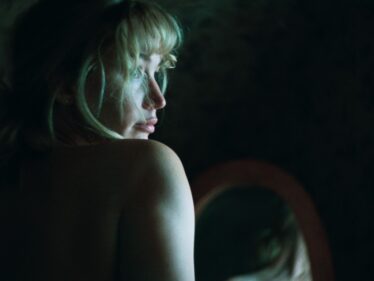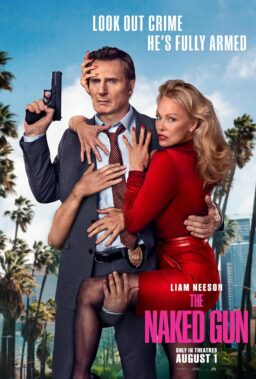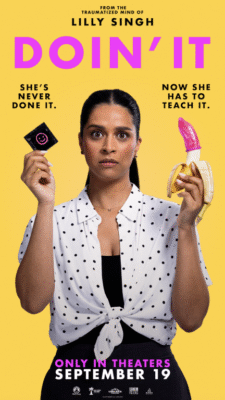James Wong Howe settled himself into a swivel chair on the stage of the Carnegie Theater, looked around, and asked it they could turn the house lights up. That’s Jimmy Howe for you: Before you shoot a scene, you light it first.
After the lights were up, and Howe had been properly introduced, he leaned into the microphone and said: “Maybe you’d like to hear how I got started. I came over from China when I was five years old, and was raised in Washington State. After I graduated from high school, I went down to California looking for adventure, and got a job pedaling a bicycle around and delivering films. Stag films.”
That got a laugh, and James Wong Howe was off. For more than two hours, he reminisced about his career as one of Hollywood’s master cinematographers. He told tales on himself, and on the directors he’s worked for. And, after showing clips from “Hud” and “Hombre,” he explained in meticulous detail how he had lighted and shot the scenes. Cinematography isn’t something a lot of movie fans are fascinated by; actors and directors are more glamorous than cameramen are. But not a single person walked out of Howe’s spellbinding performance, one of the most interesting personal appearances in the history of the Chicago International Film Festival.
After he’d delivered stag films for a sufficient period of time, Howe got a job at one of the studios holding up the slate in front of the camera and saying, “Scene, 3, Take 2” and the like. “That meant I got a close-up at the beginning of every scene,” he explained. “I’d be in front of the camera, looking around as if I were lost, holding up the slate. One day Cecil B. DeMille was looking at some rushes and he asked who that fellow with the funny face was. I guess he liked my looks, and he made me his third or fourth assistant cameraman. That was in 1918.”
It’s only when Howe mentions the date that you realize there are still craftsmen, alive and active, who span nearly the whole of movie history. Howe’s first film was “Trail of the Lonesome Pine,” a 1922 silent classic. Among his dozens of credits are “The Prisoner of Zenda” (1937), “The Adventures of Tom Sawyer” (1937), the third or fourth color film ever made; “King’s Row” (1941), “Come Back, Little Sheba” (1952), “The Sweet Smell of Success” (1957) and “The Molly Maguires,” which opens in Chicago soon. He won Academy Awards for “The Rose Tattoo” (1955) and “Hud” (1963). And here he was, at 71, ready to set off for Spain or Arizona and shoot another.
“My big break,” Howe said, “came about as an accident. As a sideline, I started taking publicity photographs of actors and actresses, and selling them the prints. One day I asked Mary Miles Minter, the silent star, if I could take her picture. She said ‘Sure, go ahead.’ “So I did, and a day after she got the prints she invited me to her dressing room. She said she wanted me to be her cinematographer. I asked why. She said because I made her eyes look dark. “Well, in those days we used black and white film that didn’t distinguish very well between blue and white. That was why you couldn’t shoot clouds in the sky. Mary Miles Minter had blue eyes, and they always came out pale on film. But in my pictures, they were dark and beautiful.”
The only problem, Howe said, was that he had no idea how he’d made her eyes dark. He finally decided it was because he’d been standing in front of a dark backdrop when he photographed her. Her eyes reflected the backdrop like mirrors. Eureka! So Howe hung a big black velvet curtain in front of his movie camera, cut a hole in it, and shot Mary Miles Minter through the hole. The result: Dark, beautiful eyes. “In those days Hollywood was a little colony and the gossip spread fast,” Howe said. “The word went around at cocktail parties that Mary Miles Minter had imported herself an Oriental cameraman, who hid behind a velvet curtain and magically made her eyes turn dark. After that, I was never out of work.”
Howe has been a technical innovator throughout his career, pioneering the wide-angle lens, low key lighting (which earned him the nickname “Low Key Howe”), and color lighting which was experimental by Technicolor’s early standards. (After he used only a fourth of the recommended lighting for Tom and Becky’s cave scenes in “Tom Sawyer,” Technicolor banned him from using the process for three years.) But some of his innovations were by the seat of his pants. One day he was shooting a DeMille picture, he said, and the great man wanted a close-up of a canary singing. They started the cameras, but the canary wouldn’t sing. A prop man remembered that his mother’s canary always sang when the sewing machine was running. So they borrowed a sewing machine from the wardrobe department. Still no song. Then they had a violinist play, to Inspire the canary. Silence.
Finally somebody took a good, close look at the canary, and determined that it was female. Girl canaries don’t sing. By this time, DeMille had lost several thousand dollars waiting for that canary to sing. “Mr. DeMille,” Howe said, “I think I got an idea to make that canary sing.”
“Nonsense, Jimmy,” said the great DeMille. “If it’s a girl it doesn’t sing, and that’s that.”
“Just watch,” said Howe, and stuck some chewing gum inside the bird’s beak. Confused, the bird started opening and closing its beak to get unstuck. “In a silent film,” Howe said, “that sure looked like singing.”
Howe pulled another bird trick years later, when he was shooting “The Old Man and the Sea” in 1958. The script called for a bird to land on Spencer Tracy’s boat, and for Tracy to talk to it. But all the birds flew up to the rafters; none would go anywhere near Tracy’s boat, which was floating in a big indoor tub representing the ocean. Finally Howe suggested weighting the birds with B.B.s, so they’d have to land on the boat or sink. It worked.
These were funny stories, but Howe grew serious as he talked about his philosophy of photography. He explained a film clip from “Hud” by showing how he’d lighted every character to emphasize that character’s inner quality. For Melvin Douglas, shadows and isolation. For Paul Newman, contrast. For Brandon De Wilde, open and simple lighting to emphasize his youth.
“I’ve been called a user of gimmicks in my time, but I always need a reason. When I shot the John Garfield boxing scene in ‘Body and Soul,’ I wore roller skates and used a hand-held camera so I could move faster and stay closer to the action. Was that a gimmick? Not if it helped the film.
“As you grow in an art or craft, you find simpler approaches. When a painter starts out, he draws in all the lines. But after many years, he begins to leave out lines, to throw them away, to suggest them without drawing them. You can do that, too, in photography, but you have to learn well.”
He was asked about some of the younger cinematographers, who like to juggle their lenses and go for spectacular effects. “Well” he said, “I’ll tell you. I was just over in Spain to shoot a movie for John Frankenheimer. I shot ‘Seconds’ for him a few years ago. In this one, he wanted me to use a 1,000-millimeter lens. I didn’t want it. I didn’t think we needed it. He did, and so we parted. Just because you have a 1,000 millimeter lens doesn’t mean you have to use it.” Howe paused. “Of course, John Frankenheimer and I are still good friends,” he said. “I got a letter the other day. John wants me to go to India and shoot his next film. I think we’ll get along without the 1,000 millimeter lens this time.”











